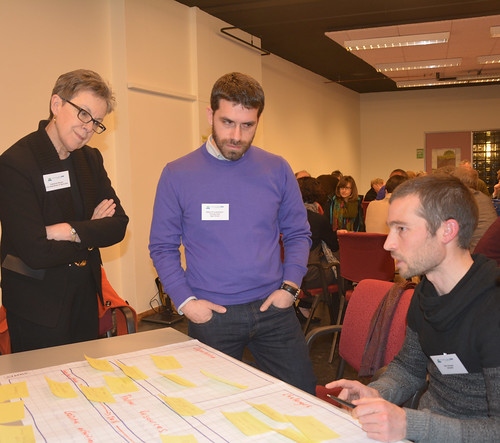Interested in implementing Smarter Lunchrooms techniques at your school? Get started with this free self-assessment checklist from the Cornell Center for Behavioral Economics in Child Nutrition Program. Team Nutrition provides nutrition education materials, training tools, and grants to assist schools in creating healthier environments. Learn more about Team Nutrition and how to become a Team Nutrition school at http://www.fns.usda.gov/tn/team-nutrition.
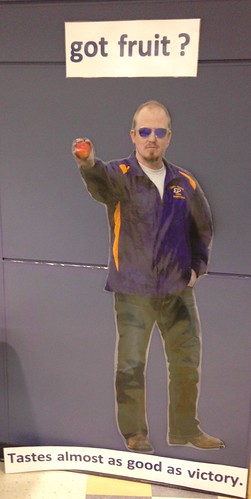
Park High School uses creative signage to encourage students to eat fruit.
By Katie Bark, RDN, LN, SNS and Molly Stenberg, RDN, LN, Assistant Project Director, Montana Team Nutrition, Montana State University
Food service directors from Montana middle and high schools are enticing teens to choose more fruits and vegetables at school lunch through the use of School Lunch Advisory Councils (SLACs). A SLAC is composed of a food service director, an educator, and two to three students that work together toward a goal of implementing simple, low-cost strategies to encourage students to make healthier choices in the cafeteria. Staff from Montana Team Nutrition and the Montana State University Food and Health Lab work with school SLACs to apply Smarter Lunchrooms techniques in the cafeteria.
For example, students from Park High School’s SLAC in Livingston created signage for the school cafeteria to promote fruit selection. This included a life-size poster of the basketball coach giving out an apple with the caption “Got fruit? Tastes almost as good as victory.” Following the use of the creative signage, repositioning the salad bar, and training food service staff, student consumption of salad bar items doubled, salad bar waste decreased by 40 percent, and overall lunch waste decreased by 35 percent.
SLAC students at Kalispell Middle School helped redesign their cafeteria by moving the salad bar to allow for better access and increased convenience. This simple change increased the number of students making selections from the salad bar by 50 percent.
Interested in starting a SLAC in your school? Here are some words of wisdom from Montana school champions for successful student engagement:
- Ask teachers, school counselors, or administrators to nominate specific students for the SLAC
- Consider offering students an incentive for their participation (e.g., extra credit)
- Schedule SLAC meetings before school or during the lunch hour
- Schedule activities during the fall semester rather than the spring semester
- Make the SLAC a school club or a project of an existing club (Family, Career and Community Leaders of America) to help make it sustainable
- Have students complete a specific task, like before and after photos, completing sections of the Smarter Lunchrooms Self-Assessment Scorecard, collecting surveys, or creating names for menu items
For more information on Smarter Lunchrooms in Montana schools, visit our Smarter Lunchroom Web site.



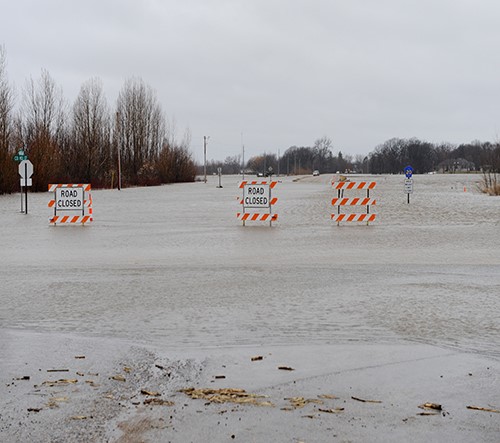





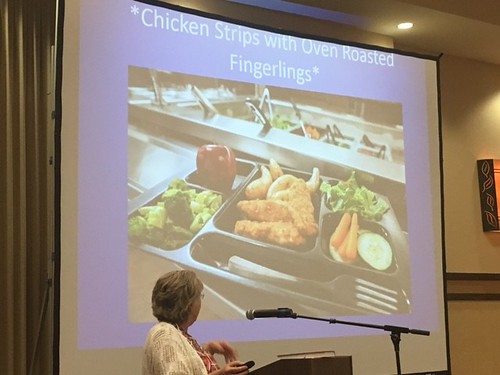
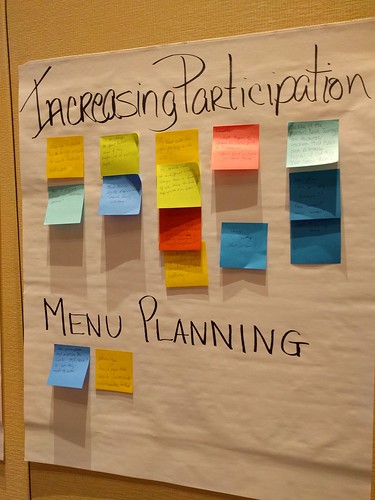


 Two new papers have just been published in the Journal of Forestry that explore attitudes of Southern Foresters towards climate change. The first paper entitled
Two new papers have just been published in the Journal of Forestry that explore attitudes of Southern Foresters towards climate change. The first paper entitled 
